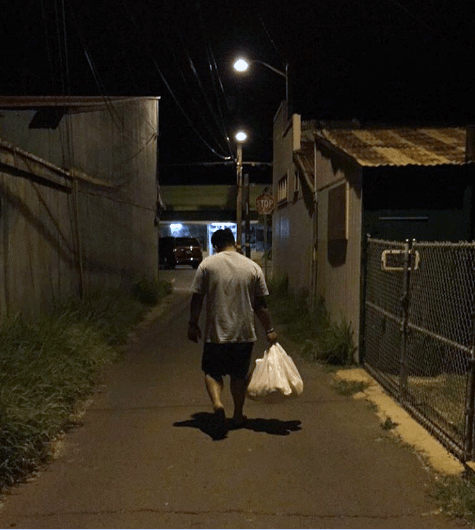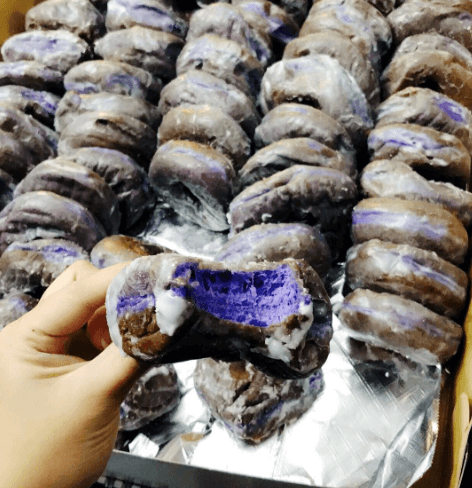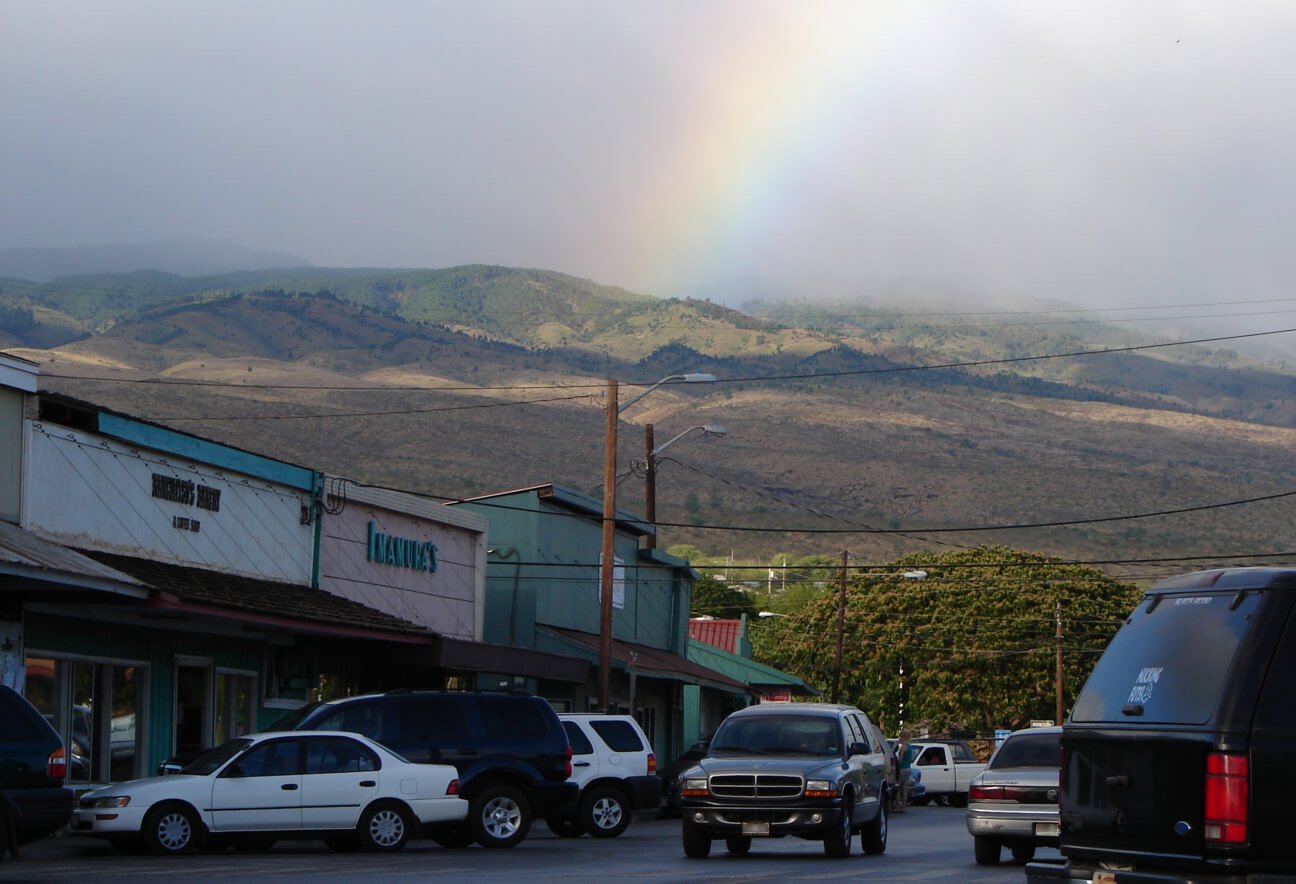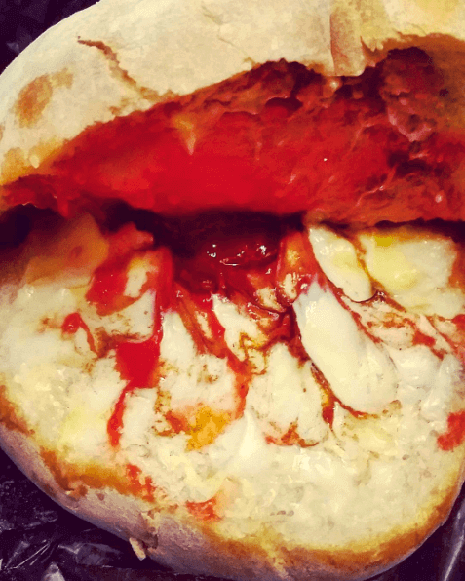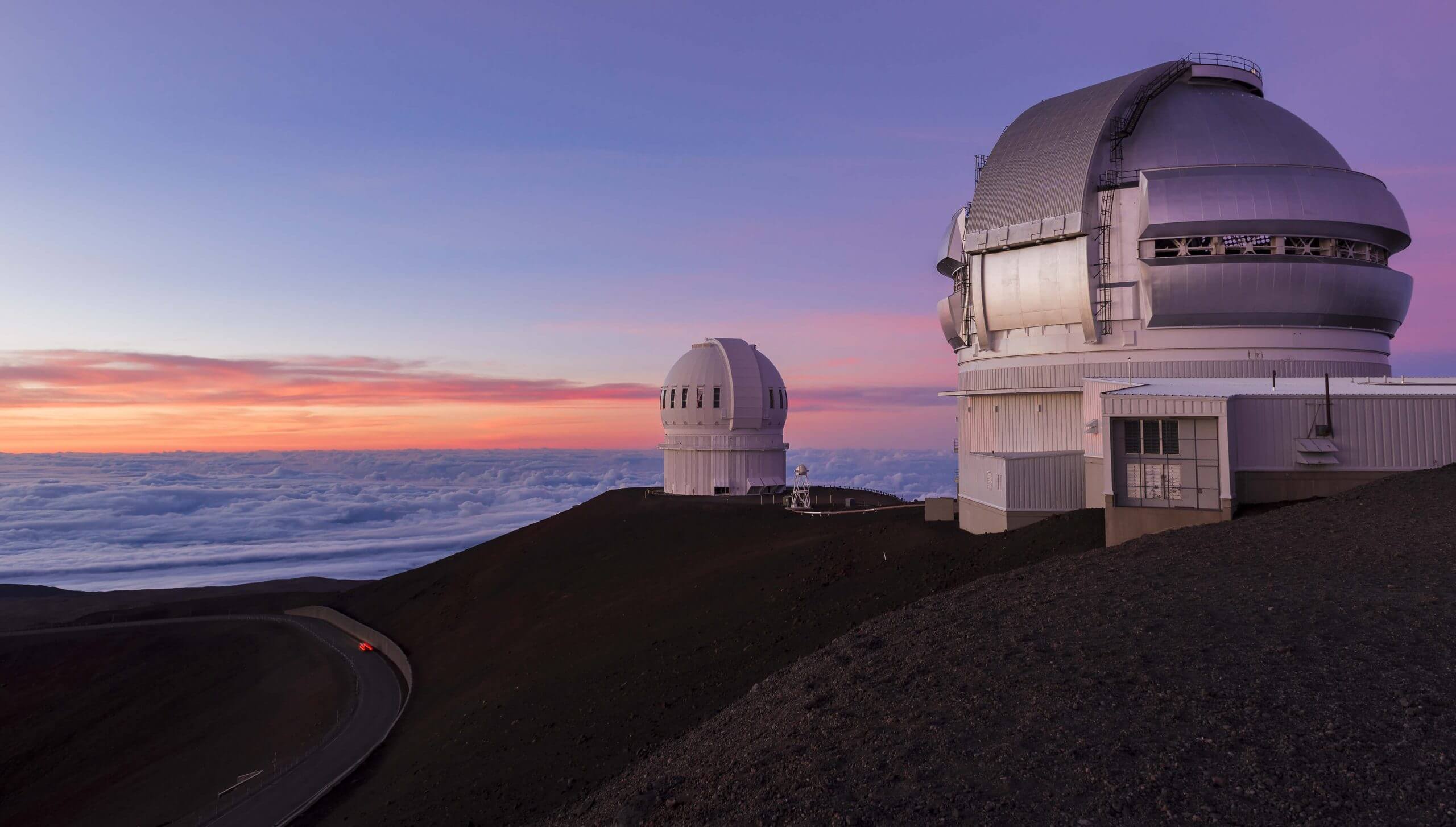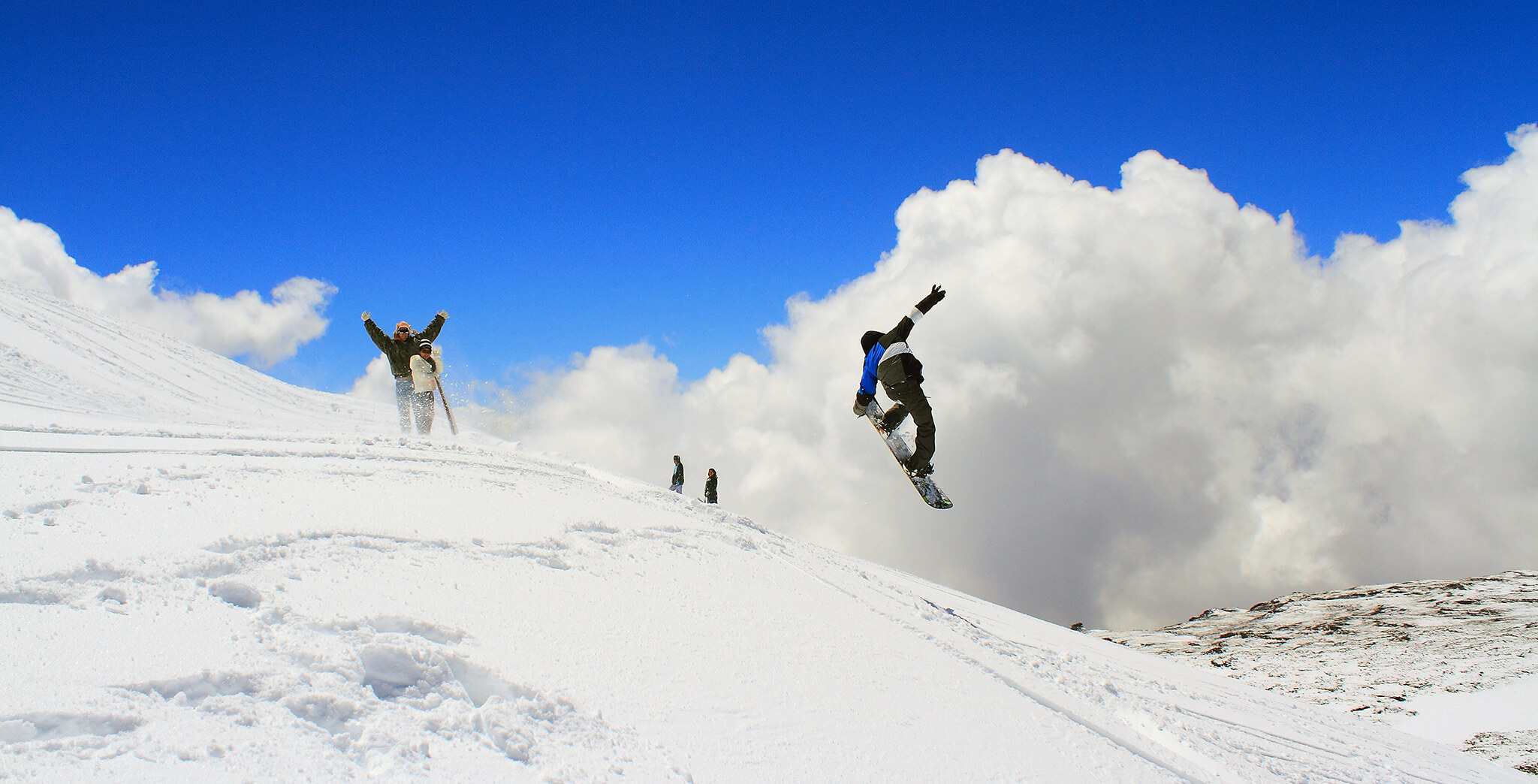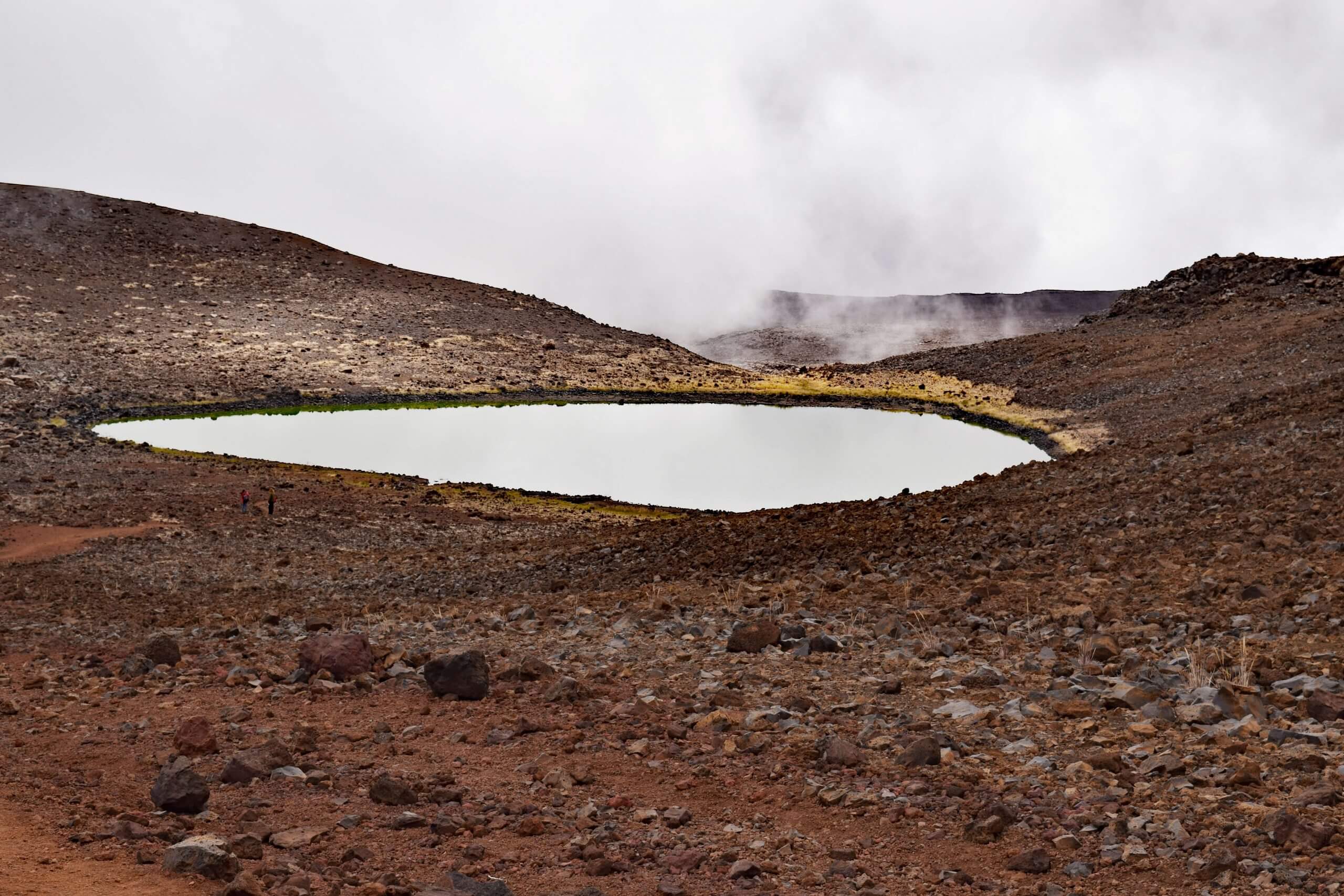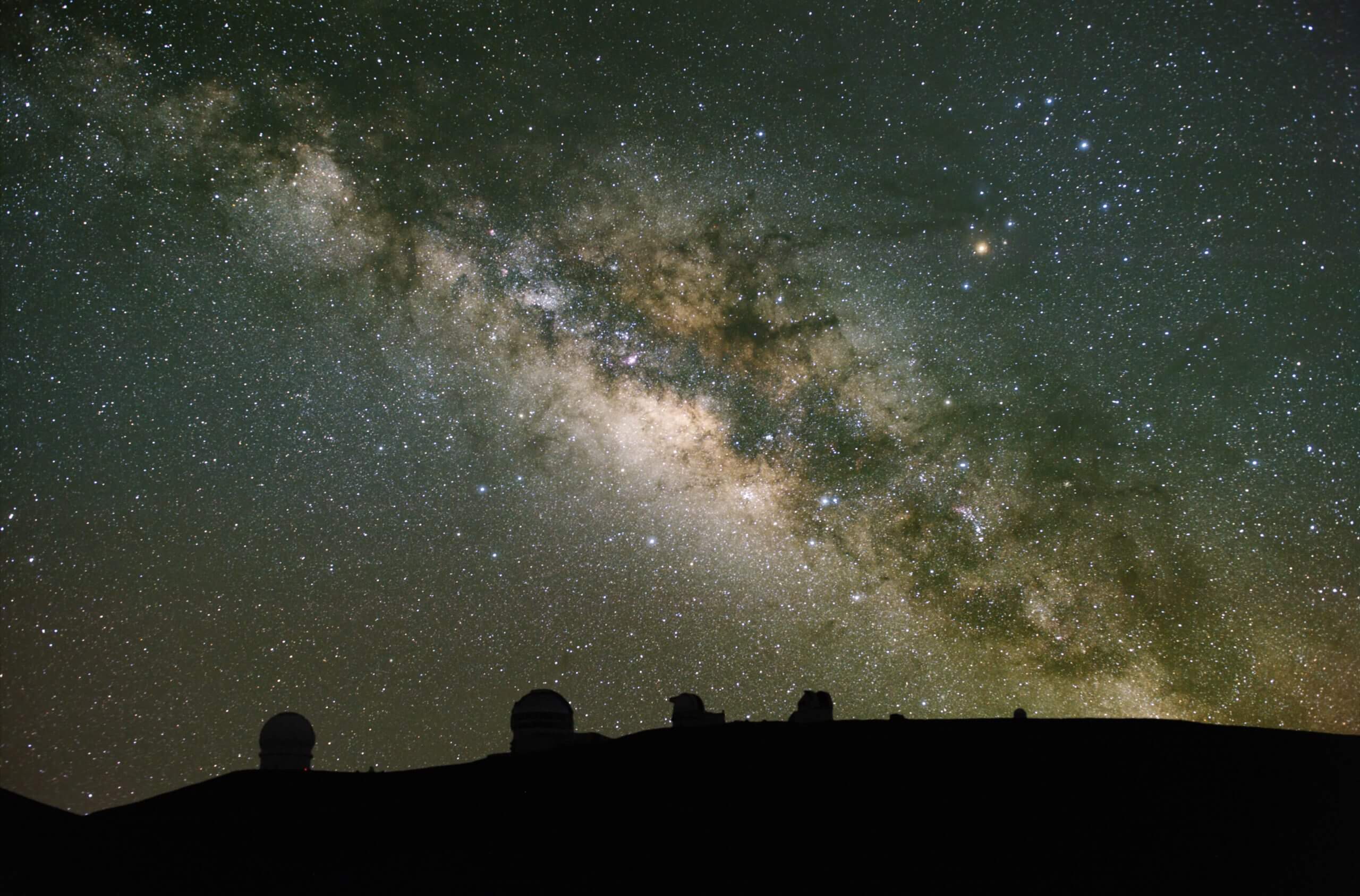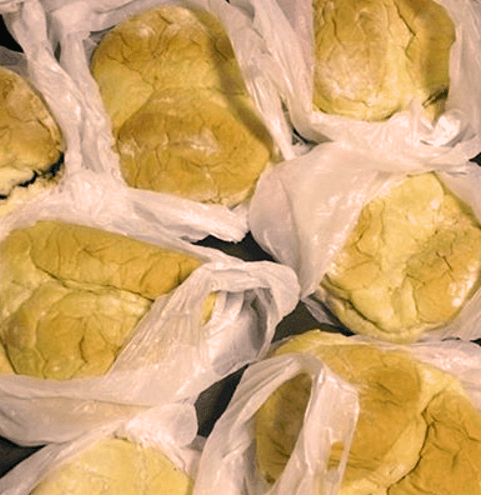
Silence and darkness battle for dominance in Kaunakakai, a small town on the southeastern shore of the Hawaiian island of Moloka`i. A dim yellow street lamp comes to life and knocks darkness off its game, and silence gains the lead.
It’s 9:30 p.m. and I’m sitting in my rental car, no one else in sight. I get out, spend a minute in the dark, and revel in the feeling of lingering on the street alone in the shadows of a ghost town. Feels odd, but I’ve got a craving, and I’m going to get my fix. Being here in the dark at Hotel Lane is different than what I might be waiting for at, say, Hotel Street in Honolulu. It defies stereotypes of traditional hedonistic pleasures sought out from back alley peddlers.
Down this narrow passageway that weaves between modest homes and turn of the century structures lies another kind of indulgence. It’s squeaky clean, appropriate for all ages, and legal: dessert.
The alleyway leading from Kanemitsu Bakery
By day, unassuming Kanemitsu Bakery offers the expected homestyle fare of breakfast, deli items, coffee, and pastries. Lonely Planet recommends its macadamia nut lavosh and others swear by the taro doughnuts. But after dark, Kanemitsu’s leads another life. They close their front doors, and the shop moonlights as a purveyor of freshly baked Moloka‘i hot bread, sold exclusively from the bakery’s back door. From 8 p.m. to midnight, every night except Tuesday, the bread is served straight from the oven, piping hot and smothered in a sweet topping. And business is good – Kanemitsu sells an average of 100 loaves of bread each night, and over 300 on weekends.
The town of Kaunakakai closes at 5 p.m., when most of its eclectic shops close – art galleries, a dive shop, health food store, plate lunch joint (open till 9 PM weekdays, but only till 2 PM weekends), and a few others that meet people’s basic needs. Moloka`i is refreshingly underdeveloped, lacking in 24-hour mini-marts to rely on when the late night munchies hit. Knowing the alley is the island’s only after dark source for a sugary treat, I made the half hour drive from the west side’s oceanfront condos (where most visitors stay) in complete darkness, sharing the road only with Moloka`i’s wild deer.
I walk down the street and spot a hand painted sign on a cement wall declaring that “Moloka`i Hot Bread” is down another alley on my left. Colored Christmas lights are the only lights at the end of this dark tunnel. I approach.
The open top half of a door offers a peak into a dark and empty cement room, no server or worker in sight. A marker board to my right announces flavor options for the toppings. Cinnamon, strawberry, blueberry, with butter or cream cheese. I knock. And wait. The voice of an aunty breaks the silence.
“Hi! What would you like?”
She’s wearing a warm smile, and I tell her I’ll take cinnamon and strawberry with butter. Soon she’s gone again, before quickly returning with a hot loaf of wheat bread sliced down the middle and oozing sugary goodness. The packaging is as modest as the location, a simple green plastic bag.
I pay my $7 (cash only, of course), and thank her. Before I leave, she generously places another bag in my arms, this one filled with three glazed pastries. Heading back down the alley, I rip off a piece of bread and stuff it in my mouth. The strawberry is jellylike, and the cinnamon (my favorite of the two) resembles a tastier and homemade Cinnabon.
As I leave, the rush arrives and I pass a young couple, family of four, and three teenage boys. Back on the main street, my car isn’t alone anymore as others pull up, and for the next hour or so, this corner in Kaunakakai will be the busiest spot on Moloka`i.
Hot bread with strawberry and butter
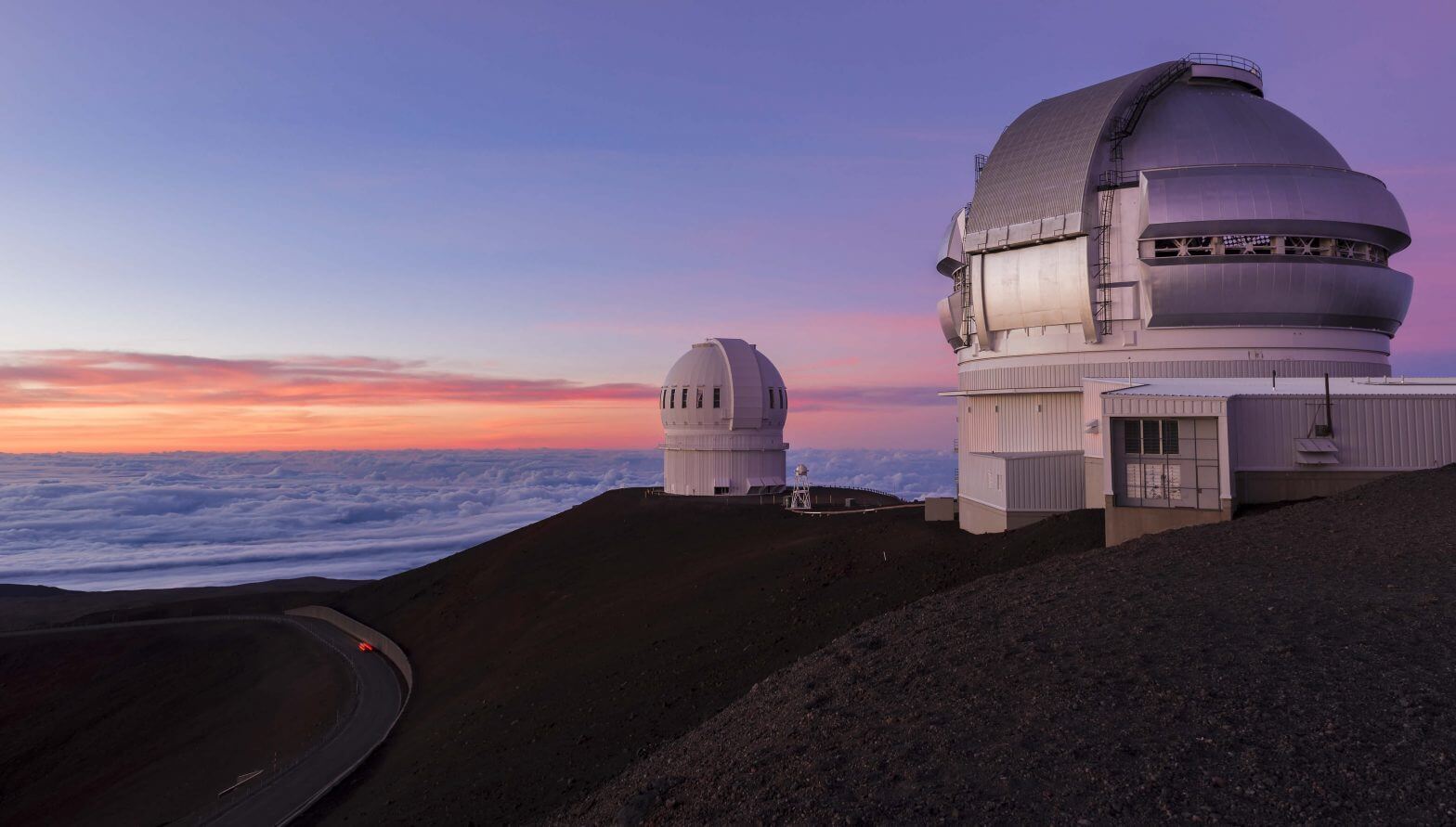
The thought of living among five volcanoes on an island in the Pacific may not instill a sense of peace in many people. But for locals on the Big Island of Hawaii, one of those volcanoes holds a range of respected qualities, and that’s Mauna Kea, the world’s tallest mountain from base to summit. It holds deep cultural and spiritual significance for Native Hawaiians. Eleven countries operate 13 telescopes on the mountain including the Keck Observatory. And high above the beaches and valleys, it can transform into a winter wonderland. When heavy rains bring a thick blanket of snow to Mauna Kea, its summit becomes a gathering place above the clouds.
The Mountain (as locals call it) looms as a stark backdrop to the laid-back east side town of Hilo. Mauna Kea reaches nearly 14,000 feet above sea level, but stakes its claim as twice as tall as Mount Everest thanks to being 32,000 feet tall from the ocean’s floor. Though Mauna Kea is considered dormant, geologists expect its neighboring shield volcano Mauna Loa to erupt again one day. Not far away Kilauea has been erupting for three decades, and inches closer to the historical town of Pahoa each day.
When locals wake to thick snow on the Mountain, eighty-degree days liven with the promise of an adventure that contrasts the usual surf missions and camping trips. Anticipation builds as people wait for word that the road to the summit has been opened. Their four-wheel-drive trucks will ascend with body boards, snowboards, and trashcan tops to serve as sleds, and descend with loads of snow for building snowmen at home. The lucky pull out winter coats and gloves, while many throw together island style snow gear where warmth increases with each layer (think lots of socks and long sleeved t-shirts).
Though the summit is reached by a rather smooth 4X4 drive, staying there for long takes some endurance. Altitude sickness can hit, resulting in nausea and dizziness. It’s advised that children under the age of 16 don’t go to the top, but they can spend time at the visitor’s center at 9,000 feet, where everyone should spend a half hour acclimating before climbing higher. Here, telescopes are available for use and nightly stargazing is offered from 6 to 10 p.m. whatever the weather.
One of the best ways to enjoy the heights and stars is with the help of Mauna Kea Summit Adventures who offer eight-hour tours that include sunset views, dinner, and stargazing.
Mauna Kea isn’t just for winter shenanigans and sightseeing. It’s home to sacred places, archaeological sites, and, recently, controversy. After years of planning, construction of the $1.4 billion Thirty Meter Telescope begun in late 2014. The telescope that will have roughly 10 times the resolution of Hubble was not born without a fight, a fight where tradition and science couldn’t find common ground.
Hawaiians and cultural preservationists say that the construction of the telescope would dissolve and disgrace the sacred places and spiritual significance of Mauna Kea. For Hawaiians, Mauna Kea embodies the union of Wakea, the Sky Father, and Papahanaumoku, the mother goddess who gave birth to the Islands.
One of those sacred sites is Lake Waiau at 13,000 feet amidst an arid, rocky, oxygen-poor landscape. The only glacially formed lake in the mid-Pacific, was and still is used for healing and cultural practices. Traditionally families would deposit the umbilical cord of newborns into the lake, as well as spread the ashes of the deceased there.
Mauna Kea under the Milky Way
At 12,000 feet elevation on Mauna Kea’s southwest slope is a quarry that contributed to the evolution of Hawaiian culture. Pre-contact Hawaiians made the trek on foot to access the high quality basalt adze quarry. Large boulders were broken down into portable adze “blanks,” which were then carried back down to shoreline homes for manufacturing.
But that was then, and this is now where Mauna Kea will help science move forward and connect Native Hawaiians with tradition. It offers snowboard contests, the best sunrises and sunsets, Zen moments at the top of the world, and a view that reaches Maui.
As stated so eloquently in the Mauna Kea Comprehensive Management Plan: “…Mauna Kea is sacred. Mauna Kea is where heaven, earth and stars find union. Not just any heaven, but Wakea, not just any earth, but Papahanaumoku, and not just any constellation of twinkling lights, but Ho‘ohokukalani, whose children descend and return to the stars.”
Just another WordPress site
